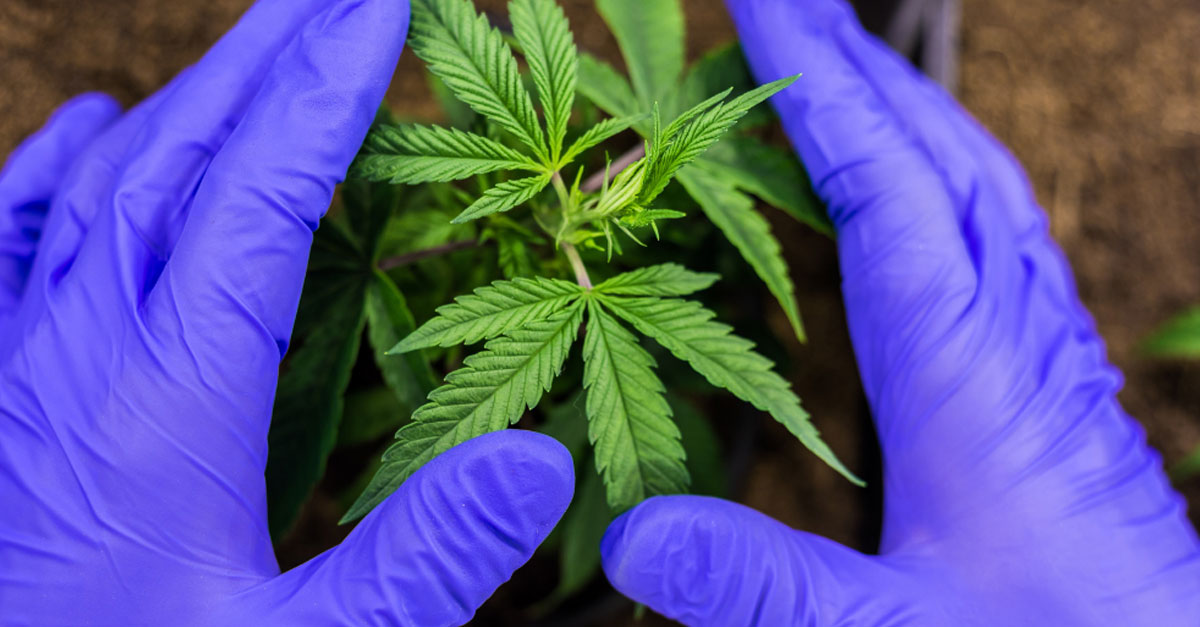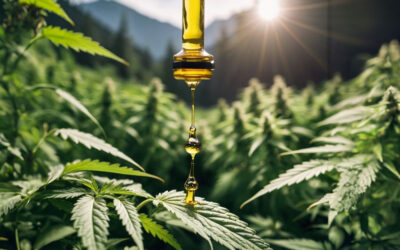The 4 Stages of Cannabis Growth

The 4 Stages of Cannabis Growth
Spring Equinox is upon us. Winter is finally coming to an end, and we couldn’t be happier about it. Not only do we get to enjoy warm sunny days, swimming, barbeques, and nature hikes, but Spring marks the perfect time for outdoor cannabis growers to start germinating their seeds. If you are thinking of growing this year for your first time, check out our article How To Grow Your First Cannabis Plant Outdoors.
This week’s article will take a closer look at the four stages of cannabis growth. For truly successful cannabis cultivation, it is crucial to understand the four stages of growth along with the expected duration of each. Their current stage determines the amount of light, nutrients, and water your cannabis plants need to ensure proper development. Knowing which stage your plants are in will let you know what care and maintenance they require and when you should harvest them. Caring for your cannabis plants by which stage they are in also helps them reach full maturity with optimal results.
How Long Does It Take for Cannabis To Mature?
A cannabis plant normally takes 10 to 32 weeks (three to eight months) to grow from seed to harvest.
*Note – Autoflowering seeds take considerably less time but produce much less flower.
The duration of the vegetative stage (which occurs between seedling and flowering) can vary depending on several factors. This is typically when there is the most variability in how quickly your cannabis plants will grow.
The cannabis cultivation process comprises four stages of growth. As previously mentioned, each period is essential in producing an optimal yield of high-quality cannabis. So let’s look closer at these stages to help you grow some really good weed:
Stage 1: Germination
Length of the stage – 3 to 10 days
The first stage of cannabis cultivation begins with the seed. Good seeds should feel hard, dry, and brown. Undeveloped seeds are squishy and green or white and likely won’t germinate.
When a cannabis seed germinates, two rounded cotyledon leaves will emerge from the stem, absorbing sunlight and allowing the plant to grow. As roots develop, the stalk will begin to rise, and fan leaves will start to appear – this marks the beginning of your seedling’s life cycle.
Once germination is complete, you will want to move your seedling to a larger pot with more soil. This way, the tap root can reach down while its stem grows upward.
Stage 2: Seedling
Length of the stage – 2 to 3 weeks
Your cannabis plant will develop fan leaves as it matures into a seedling. As a sprout, the leaves will have one rigid blade, but when new growth occurs, the leaves will have several blades (commonly referred to as “fingers”).
*note – most mature cannabis plants will contain between five and seven blades per leaf, while some plants have even more.
During this stage, the plant is prone to disease and mold. Therefore, it is critical to keep the environment clean and to keep an eye out for excess moisture. Many outdoor gardeners begin their seedlings indoors under artificial grow lights. This gives you more control over your plants in the vulnerable seedling stage.
Cannabis plants are referred to as seedlings until they have fully developed fan leaves with all of their blades. A healthy seedling should be a brilliant green.
Stage 3: Vegetative
Length of the stage – 3 to 16 weeks
Cannabis cultivation enters its vegetative stage after transplanting into a larger pot. In this stage, you will see rapid root and foliage growth. As the plant matures, it will require more water. Early on, water near the stalk is appropriate; however, as growth progresses, the roots will spread out from the stalk and thus absorb water more efficiently if you water further away from it.
*Tip – vegetative plants require soil with ample nutrients to thrive. It is recommended that they be given a high-nitrogen fertilizer at this stage of growth.
Stage 4: Flowering
Length of the stage – 8 to 11 weeks
Cannabis plants reach their final stage of growth when they enter the flowering stage. During this period, they will produce resinous buds that are the result of your hard work and dedication to growing top-quality cannabis. Although most strains take 8-9 weeks to complete flowering, certain sativa strains may take longer.
During the summer solstice, plants that are grown outdoors will start producing pre-flowers, signaling the initiation of the flowering phase. As daylight hours decrease, photosynthesis in the plant shifts from growth to producing buds and forming flowers. This signals harvest season.
The flowering stage comprises three sub-stages:
- Week 1-3: Flower initiation – The plant’s growth cycle will persist, and female plants will enter into a pre-flower stage characterized by white hairs, or pistils. These hairs serve as the initial formation of buds.
- Week 4-5: Mid-flowering – The plant will reach the end of its growth cycle, and the buds will begin to swell significantly.
- Week 6 and on: Ripening – Trichome density should be observed for maximum yield; plants may become sticky when dense, and pistil color can inform you of the optimal harvest moment.
Make sure never to prune when your cannabis plants are flowering. This can upset their hormones and affect their quality and yield. Rather than pruning, you should trellis or scrog. This will help facilitate the formation and full development of buds, as well as create good airflow around your plants.
Male Vs. Female Pre-Flowers
It’s essential to distinguish between male and female pre-flowers. This step is vital because allowing males to pollinate the females will produce inferior crop yields. Therefore, knowing how to identify the pre-flowers of your plant can help you maximize the quality and yield of your harvest.
Before flowering, visible signs can be found on the plant’s nodes — the points at which a branch develops from the main stalk. Female plants will showcase an oval-shaped bract which includes protruding hairs or pistils. On the other hand, male plants reveal round pollen sacs.
When to Harvest
At the start of the flowering period, buds generally exhibit little growth. As the cycle continues, buds tend to develop more and more until they reach their peak size. Finally, as the flowering stage comes to an end, bud development slows down as they become fully formed. Once cannabis buds have fully developed, they are ready to harvest and enjoy!
Latest GreenCore News
CBGA: The Mother of All Cannabinoids
CBGA: The Mother of All Cannabinoids CBGA, often called the "mother of all cannabinoids," is gaining significant attention. This foundational cannabinoid is showing promise in reducing seizures and treating conditions like insomnia and chronic pain. Recently, its...
Cannabis Concentrate Spotlight: Rick Simpson Oil
Cannabis Concentrate Spotlight: Rick Simpson Oil Rick Simpson Oil has become a cornerstone in the world of cannabis products. Renowned for its versatility, this concentrate offers a multitude of benefits for both medical patients and recreational users.In this blog,...
CBD 101: Properties, Production, and Potential
CBD 101: Properties, Production, and Potential CBD has rapidly evolved from a little-known compound to a household term. But while it has become a ubiquitous term, many remain unclear on what cannabidiol actually is. In this blog, Green Core Specialty Insurance...
Contact Us
Office Location
1600 Golf Road, Suite 1200
Rolling Meadows, IL 60008
Office Hours
M-F: 8am - 6pm
Phone
847-201-4600



